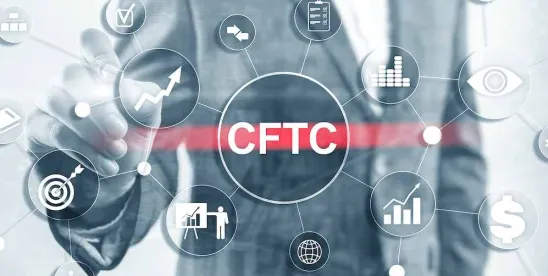Part 17 of the CFTC’s regulations require futures commission merchants, clearing members of registered derivatives clearing organizations, and foreign brokers holding omnibus accounts with such FCM clearing members to submit reports of the positions held by “large traders” (traders controlling positions exceeding thresholds prescribed under those regulations). For reporting firms, large trader reporting presents perhaps the most stubborn compliance challenge in the CFTC rulebook.
Part 17’s difficulties have stemmed in large part from having to conform position reporting to the strictures of a Cobol-based data submission standard originally developed in the 1980s. (In truth, the larger challenge derives from the CFTC’s unwillingness to adopt a “report all” standard for position reporting — the easiest to implement for reporting firms and presumably the one most consistent with complete transparency to the regulator. But that fight’s for another day.)
At any rate, the good news is that life is going to get a little easier for compliance and operations professionals tasked with overseeing large trader reporting under Part 17. This week, the CFTC announced a final rule amending Part 17 to sunset the Cobol data submission standard; delegate authority to the “Director of the Office of Data and Technology” (renamed the “Division of Data” in a 2020 restructuring) to prescribe a modern submission standard for Part 17 reports; and replace the data fields under the legacy Cobol standard with an appendix specifying and adding data elements (to be memorialized in a Part 17 Guidebook that accompanied the release). The transition to more modern data submission standards, and in particular, to FIXML, the Financial Information eXchange Markup Language, has been underway at the CFTC for several years; the revisions to Part 17 will ensure that market participants and the CFTC alike will be better able to capture and leverage the affected datasets.
Unusually given the technical nature of the release, Commissioner Caroline D. Pham dissented, noting fair notice and due process issues, as well as the peculiar persistence of references to a CFTC Office that no longer exists.
The Commission adopted the Part 17 amendments largely as proposed — though that’s not to say that true fans of large trader arcana will not find passages in the final release worth lingering over. In its comment letter, the FIA had requested that the Commission confirm prior guidance from CFTC staff that reporting firms are not required to file change updates to reports based on “late claimed give-up or transfer activity” (referring to positions held by an executing broker for give-up to the controlling trader’s clearing broker, which are held overnight on the executing broker’s books overnight between trade date and T+1). FIA included three hypotheticals in an appendix to its letter, illustrating the scenarios it was concerned about. After appearing to demur in response (deeming FIA’s request for guidance “outside the scope of this rulemaking”), the Commission continued:
“The hypotheticals in FIA’s letter do address a scenario where trades have been executed on a given day, but 'have not been claimed yet in clearing' as of the close of market on that same day. For purposes of populating the ‘Contracts Bought’ and ‘Contracts Sold’ data elements, which include contracts bought and sold via give-up transactions, a reporting firm should generally count contracts that have been claimed for clearing and therefore are in a special account as of the close of market on the day covered by the report. To clarify the definitions of ‘Contracts Bought’ and ‘Contracts Sold,’ the Commission has removed the reference to ‘give-ups processed beyond T+1’ and replaced it with ‘contracts claimed for clearing as a result of trade allocations such as give-ups.’ The ‘Contracts Bought’ and ‘Contracts Sold’ data elements, respectively, capture the gross number of contracts bought by a special account as of the close of the market for a covered day and the gross number of contracts sold from a special account as of the close of the market for a covered day, excluding contracts bought or sold from a special account in connection with exchanges of derivatives for related positions (EDRPs), transfers, option exercises, or deliveries.”
Notwithstanding its demurral, then, this passage appears to confirm the staff’s legacy advice, as illustrated in the second and third hypotheticals from the FIA comment letter.
Although the rules as revised promise smoother compliance sailing ahead, the transition will take time and require new operational and IT builds. Recognizing as much, and in response to the recommendations of several commenters, the CFTC set a 730-day compliance period from the date of publication in the Federal Register.
The text pending publication of the final rule, the updated Part 17 Guidebook, and Commissioner Pham’s dissent are available here.





 />i
/>i

